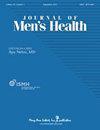A nationwide analysis of hormonal contraception, sterilisation surgeries and reversal practices amongst Australian men and women from 2001 to 2021
IF 0.6
4区 医学
Q4 Medicine
引用次数: 0
Abstract
Family planning falls within the spectrum of care within our medical society. We sought to illustrate changes in contraceptive methods over time and evaluate tubal ligation and vasectomy reversal practices in Australia. Yearly data from 2000 to 2021 was extracted from 3 databases: Pharmaceutical Benefits Schedule, Medicare Benefit schedule and Australian Institute of Health and Welfare databases. Population adjusted rates of procedures and medical therapies were calculated using data from Australian Bureau of statistics. Use of Long acting reversible contraception (LARC) has increased by 34.1% from 2001 to 2021, with Mirena being the preferred contraception. The peak age group for tubal ligation during caesarean section was those >35-year-old (64.7%) whereas vasectomy more commonly performed in men aged 35–44. There was a 21.6% decrease in the number of vasectomies over time from 2000–2020. Female surgical sterilisation:vasectomy ratio shows tubal ligation was twice more common than vasectomy. Both macro/microsurgical anastomosis of the vas deferences were conducted: vasovasostomy (VV) and vasoepididymostomy (VE). There was a preponderance in the use of microsurgical approach for VV. Reversal mostly common occurred in those aged 40–44 at 29%. Overall, the rate of vasectomy is continuously falling over time whilst there is a steady incline in the use of LARC from 2020–2021. Both vasovasostomy and vasoepididymostomy reconstruction are practised. Although definitive conclusion from the literature lags, “real-world” trend indicate that micro-surgically conducted vasovasostomy might be the better surgical technique for desired patient outcomes.2001年至2021年澳大利亚男性和女性激素避孕、绝育手术和逆转手术的全国分析
计划生育属于我们医疗社会的护理范围。我们试图说明避孕方法随时间的变化,并评估澳大利亚的输卵管结扎和输精管切除术逆转实践。2000年至2021年的年度数据提取自3个数据库:药品福利计划、医疗保险福利计划和澳大利亚卫生与福利研究所数据库。使用澳大利亚统计局的数据计算了经过人口调整的手术和医疗比率。从2001年到2021年,长效可逆避孕(LARC)的使用增加了34.1%,其中曼月乐是首选避孕方法。剖宫产手术中输卵管结扎的高峰年龄组为35岁(64.7%),而输精管切除术更常见于35-44岁的男性。从2000年到2020年,输精管切除术的数量下降了21.6%。女性手术绝育:输精管结扎比输精管结扎常见两倍。输精管的宏观/显微手术吻合:vasovasasostomy (VV)和vasoepididymostomy (VE)。显微外科入路治疗VV有优势。逆转最常见于40-44岁的人群,占29%。总体而言,输精管结扎率随着时间的推移不断下降,而LARC的使用从2020年到2021年有一个稳定的趋势。血管输精管吻合术和血管附睾吻合术重建均可施行。虽然从文献中得出明确的结论滞后,但“现实世界”的趋势表明,显微外科进行的血管造口术可能是更好的手术技术,以达到预期的患者结果。
本文章由计算机程序翻译,如有差异,请以英文原文为准。
求助全文
约1分钟内获得全文
求助全文
来源期刊

Journal of Men's Health
Medicine-Urology
CiteScore
0.70
自引率
28.60%
发文量
153
审稿时长
10 weeks
期刊介绍:
JOMH is an international, peer-reviewed, open access journal. JOMH publishes cutting-edge advances in a wide range of diseases and conditions, including diagnostic procedures, therapeutic management strategies, and innovative clinical research in gender-based biology. It also addresses sexual disparities in health, life expectancy, lifestyle and behaviors and so on. Scientists are encouraged to publish their experimental, theoretical, and descriptive studies and observations in as much detail as possible.
 求助内容:
求助内容: 应助结果提醒方式:
应助结果提醒方式:


